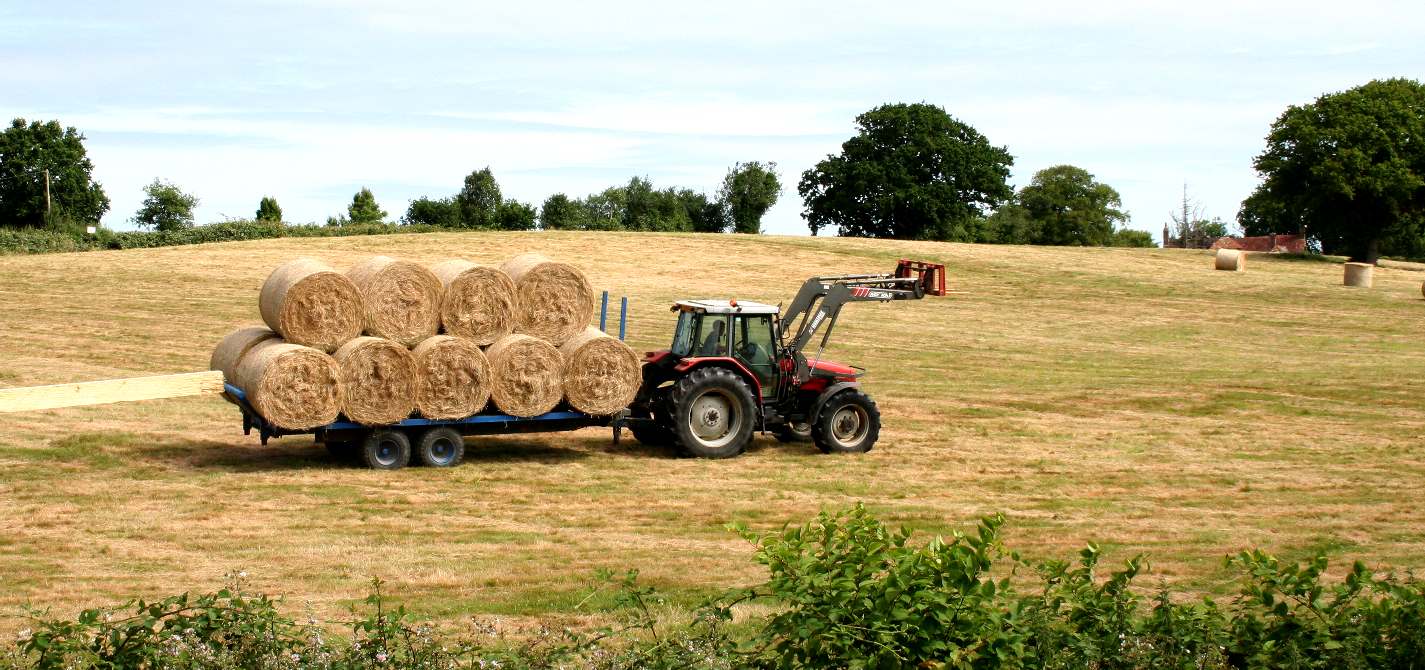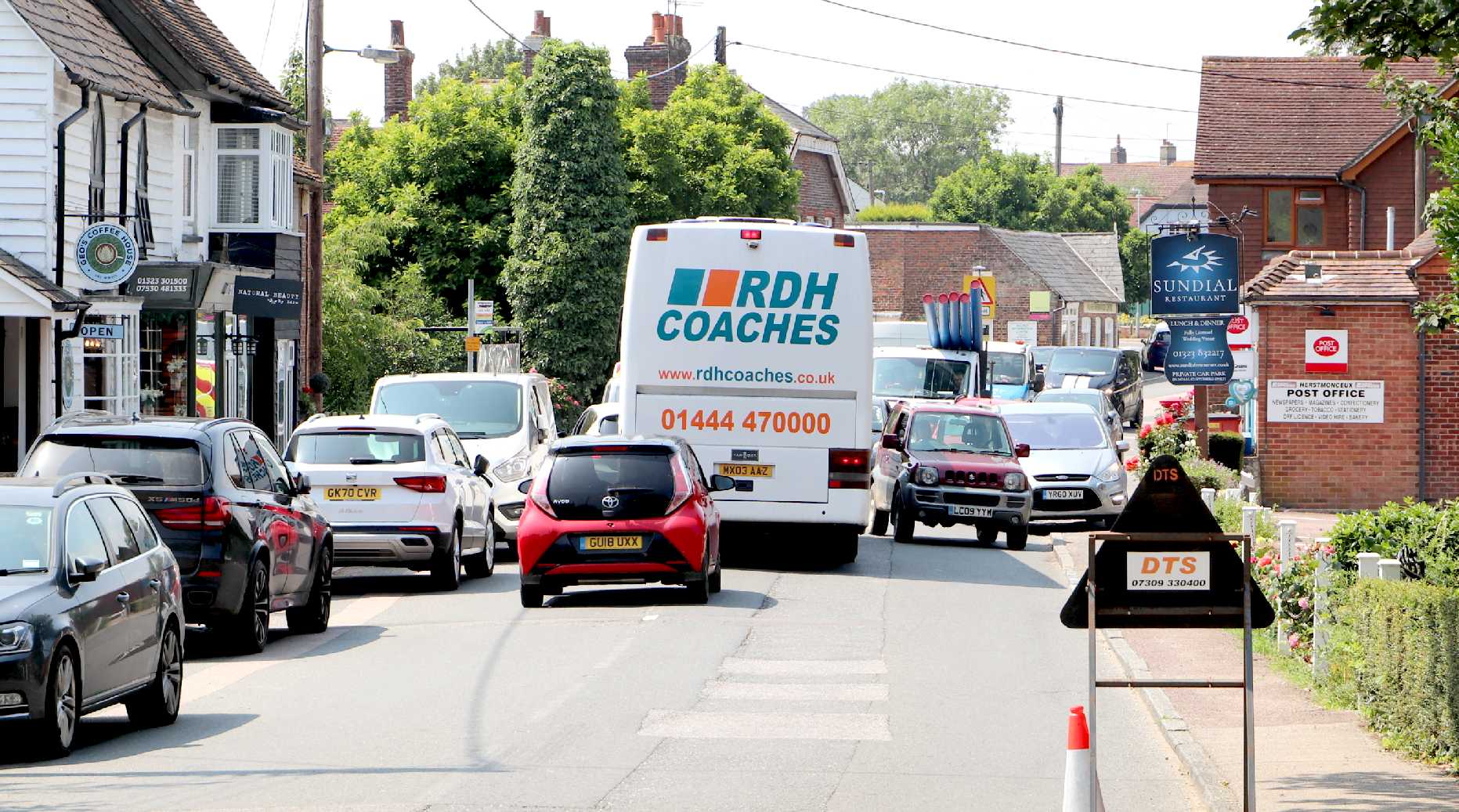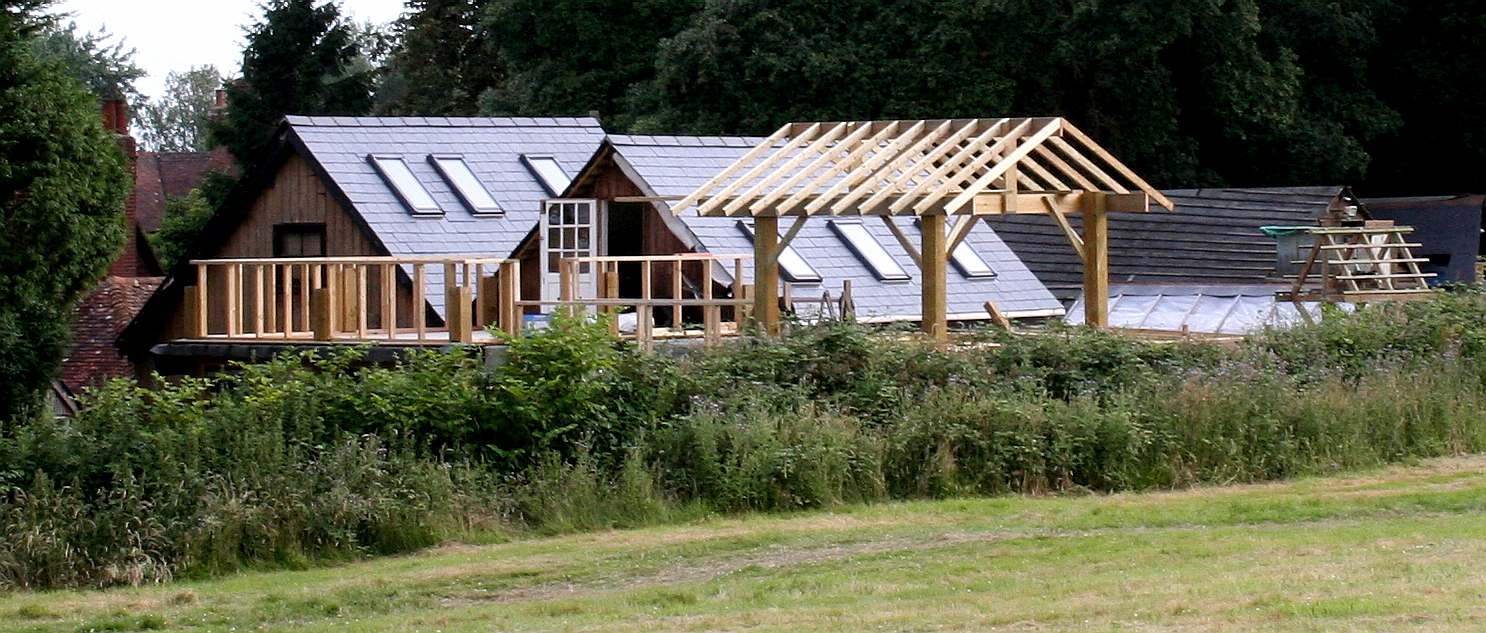
Farming
in Sussex, growing food for self-sufficiency and to feed livestock
Herstmonceux is a village and civil parish in the
Wealden District of East Sussex, England, which includes
Herstmonceux
Castle. The village is twinned with Varengeville-sur-Mer, in Normandy, France.
The name may be spelled: Hurstmonceux.
Both are correct, with locals using both names interchangeably. A
'Hurst' is a wood, grove, or thicket of trees.
The first written evidence of a settlement at ‘Herste’ appears in the Domesday Book of 1086.
The name is Anglo-Saxon in origin and implies a ‘clearing in the wood’. By the end of the of the 12th century, the family living at the manor of Herste had achieved considerable status. Through the marriage of Idonea de Herste to a Norman nobleman named Ingelram de Monceux, the manor became known as the Herste of the Monceux and eventually Herstmonceux.
In the 15th century, Sir Roger Fiennes, a Monceux descendant, built Herstmonceux Castle, now the oldest brick building of note in the country, to replace the existing manor house.
It seems Sir Roger decided he didn’t want anyone using the track that passed the front of his new home. As such, he had it blocked off so that
travelers had to go north of his estate via Gardner Street. A settlement was established
at Gardner Street, but it wasn’t until the late 19th century that Gardner Street
(A271) became known as the village of Herstmonceux.
The Herstmonceux Medieval Festival is held annually in August.
The village (previously called Gardner Street) is part of the larger Herstmonceux civil parish, which includes Cowbeech and the hamlets of Foul Mile, Trolliloes, Cowbeech Hill, Stunts Green, Ginger's Green, Flowers Green and part of Windmill Hill where the
Windmill Hill Windmill is situated. Cowbeech village is north-west of the parish. Eastbourne is 7 miles (11 km) south-west of the village, and Brighton and Hove 21 miles (34 km) south-west.
Herstmonceux
Castle, two miles (3.2 km) south-east of the village, is a former site of the Royal Observatory, Greenwich. It is now home to the Bader International Study Centre of Queen's University, Kingston, Canada, and the area therefore enjoys an influx of Canadian and other international students each school year. The castle grounds are also home to the Observatory Science Centre and the Herstmonceux Mediaeval Festival. Buckwell Place was the seat of the Hare family.
Hurstmonceux is the location of the world's oldest surviving, wooden, electricity generating station complete with battery load levelling in the distribution to the village. The industrial complex is situated in
Lime
Park, 400 yards from the extremely congested high street. Where the
A271 has to carry many times more traffic than intended, due to the
house building boom encouraged by Conservative
policies, that have superheated UK economics, leading to excessive
borrowing well past £2 trillion pounds, massive inflation and a cost of
living crisis in 2022.
There are two Sites of Special Scientific Interest within the parish. Herstmonceux Park is of importance because of its wetland habitat and fen vegetation. It is the only known location of Milk Parsley (Peucedanum palustre) in the south-east. The second site,
Pevensey
Levels, lies partially in the parish. The site is of biological interest consisting of low-lying grazing meadows, hosting a wide variety of wetland flora and fauna.

ROUTINE
CONGESTION -
It's no joke. You
can see how often this bit of the High Street is dug up from the repair
patches. It's like an annual event. East Sussex County Council get their
heads together to arrange for the most awkward time run some more
cables, sewerage or other pipes. But, why did they not make provision
for that before? It's worse than living in London, traffic wise, but you
are in the country, cut off from supermarkets and other stores.
HISTORY
The name comes from Anglo-Saxon hyrst, "wooded hill", plus the name of the Monceux family who were lords of the manor in the 12th century. In 1086, the manor, simply called Herste, was in the ancient hundred of Foxearle.
In 1677, Thomas Lennard, 1st Earl of Sussex, was paid £3 when he went to a cricket match played at "ye Dicker", a common near Herstmonceux, one of the earliest references to the sport.
The Herstmonceux area is known for the making of trugs, wooden baskets made from split willow boards set in an ash or chestnut
frame, popular with gardeners. A number of local people continue this
tradition, though the most famous workshop that was in the heart of the
village, was allowed to be demolished by local councillors, for some
unremarkable housing.
GOVERNANCE
The parish
council consists of eleven elected members. An electoral ward of the same name exists. This ward had a population at the 2011 census of 2,852.
Education is provided at Herstmonceux Church of England Primary
School.
RELIGION
All Saints' (Church of England) parish church, with its 12th-century west tower and 13th/14th century nave, overlooks the Castle. Herstmonceux Congregational Church, just outside the village on the way to the castle, was erected in 1811 and is now a listed building.
SUSTAINABILITY
- AFFORDABLE HOUSING
There
is an almost total lack of affordable housing in and around the village
of Herstmonceux. Sustainability
and the 'Blue'
or Circular
Economy, not being high on the agendas of local authorities. But
then we must remember that Margaret
Thatcher sold off our social housing, and the Conservative
Party have continued to promote the build of executive housing as
investments to launder
overseas money. So creating generations of financial
slaves in the village.

WORLD'S
ONLY SURVIVING EXAMPLE - The old
Generating
Station in Lime
Park, just a few hundred yards outside the Herstmonceux village
envelope, is a modest industrial installation that is remarkable because
is has survived the ravishes of time, in a world where Brownfield sites
are snapped up by property developers for fast profits. Other early electricity
stations have been demolished or rotted away. Hence, is an obvious
selection as a UNESCO
World Heritage Site.
The
Trust that cares for the buildings, needs help to maintain this interesting industrial complex.
At present the
buildings have no reasonable or beneficial use, leaving the building at
risk, not least of which is from heritage
vandals.
LINKS
& REFERENCE
https://www.eastsussex.gov.uk


